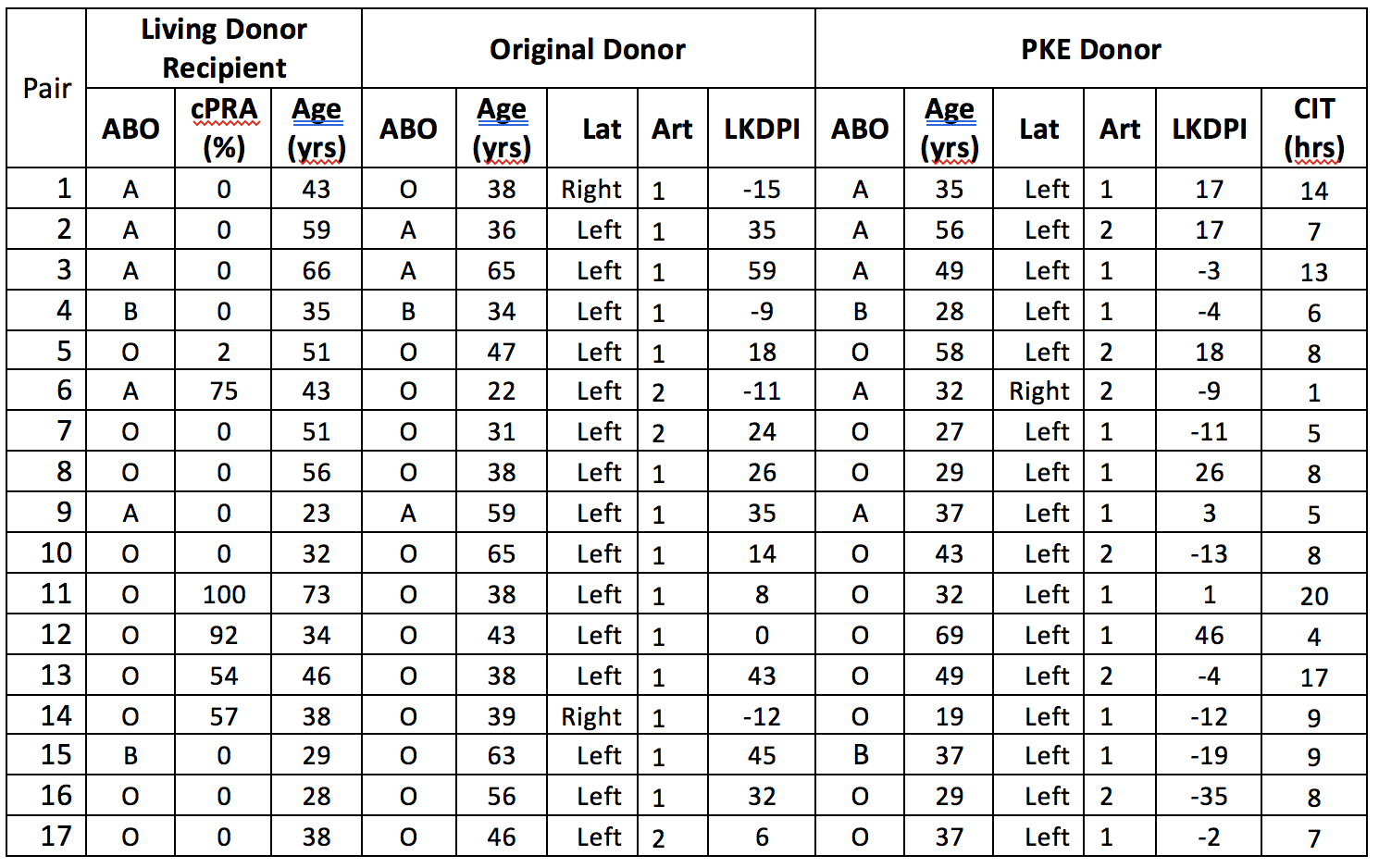Compatible Paired Donation in Paired Kidney Exchange: A Look at the Road Not Taken
MedStar Georgetown Transplant Institute, Washington, DC
Meeting: 2021 American Transplant Congress
Abstract number: 472
Keywords: Kidney transplantation, Living donor, N/A
Topic: Clinical Science » Kidney » Kidney Living Donor: Selection
Session Information
Session Time: 7:30pm-8:30pm
 Presentation Time: 8:00pm-8:10pm
Presentation Time: 8:00pm-8:10pm
Location: Virtual
*Purpose: Paired kidney exchange (PKE) offers incompatible donor-recipient pairs increased access to transplant. Compatible pairs are increasingly joining the PKE in an effort to find younger, better matched organs and altruistically to facilitate transplants by expanding the PKE pool. We reviewed compatible pairs entered into the National Kidney Registry (NKR) comparing the original donor entered into the exchange to the final donor the recipient received.
*Methods: We conducted a retrospective cohort study of 17 compatible pairs transplanted via the NKR between 4/2017 and 11/2020 at a single center. For each pair a living kidney donor profile index (LKDPI) score was calculated. This has been used to characterize expected LD outcomes with a negative number predicting lower risk of allograft failure than any deceased donor organ and a number between 1 and 100 correlating with an expected risk of allograft failure comparable to the equivalent deceased donor KDPI.
*Results: Recipients were more likely to be female (65%). Mean age was 43.8 years. All but one recipient was on dialysis at time of transplant. All recipients were ABO compatible with negative crossmatch and negative testing for donor specific antibody with their original donor. The PKE donors were younger (39.2 years) compared to original donors (44.6 years), p= 0.09. Five recipients got PKE donors older than their original donor while 12 received donors that were an average of 14.2 years younger. Mean creatinine clearance was higher for PKE donors (121 mL/min) compared to original donors (108 mL/min), p=0.05. One recipient with a left donor got a right kidney while two who had right donors received left kidneys. Five recipients who had donors with one artery received a donor with two arteries and two recipients with donors with two arteries got a donor with one artery. Average cold ischemia time (CIT) was 8.8 hours in this study vs expected 52 minutes for non-PKE living donor (LD) transplants.
All had immediate graft function. There was 100% graft and patient survival at 1 year. Mean serum creatinine levels were 1.2 mg/dL at 6 months (n=14) and 1.2 mg/dL at 12 months (n=12). LKDPI scores were better for PKE facilitated transplants on average (0.94 ± 19.1) compared to original donor-recipient pairs (17.5 ± 22.4), p=0.02.
*Conclusions: Recipients enrolling into the NKR as compatible pairs receive organs from younger donors with better LKDPI scores. Centers can and should set limits on maximum acceptable donor age and prioritize low eplet mismatches for compatible pairs in the NKR to optimize LD recipient outcomes.
To cite this abstract in AMA style:
Vranic G, Gilbert A, Thomas B, Ghasemian S, Cooper M, Verbesey J. Compatible Paired Donation in Paired Kidney Exchange: A Look at the Road Not Taken [abstract]. Am J Transplant. 2021; 21 (suppl 3). https://atcmeetingabstracts.com/abstract/compatible-paired-donation-in-paired-kidney-exchange-a-look-at-the-road-not-taken/. Accessed December 21, 2025.« Back to 2021 American Transplant Congress

